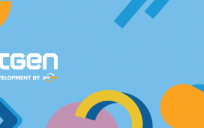President Joe Biden has sworn in for over a month and his administration has already dedicated time and legislation towards improving federal diversity, equity and inclusion.
In an executive order on his first day in office, Biden highlighted the setbacks marginalized communities face and his desire to achieve equity for all. “Because advancing equity requires a systematic approach to embedding fairness in decision-making processes, executive departments and agencies (agencies) must recognize and work to redress inequities in their policies and programs that serve as barriers to equal opportunity,” the executive order says.
For many in government, equity is a vital part of their job. While the new administration has a goal that will change policy and improve the lives of many in the future, it is important to understand the actions that are currently happening in the federal government to create equity for all.
NIH’s Office of Equity, Diversity, and Inclusion
Acting Director Treava Hopkins-Laboy has been leading her agency, the National Institutes of Health’s Office of Equity, Diversity, and Inclusion (EDI), towards a comprehensive understanding of the three concepts to create a better environment for all. Hopkins-Laboy has over 30 years’ experience with the Health and Human Services Department (HHS). While EDI hosts events for commemorative months, its mission is to work towards equity daily, through many mediums.
Meeting Specific Needs
EDI celebrates all historically marginalized and underserved communities, including Asian Americans and Pacific Islanders, Blacks, Hispanics, Native Americans, people with disabilities, sexual and gender Minorities and Women. Each community has a commemorative month dedicated to celebrating its history. “We have a principal strategist for each of our portfolios,” Hopkins-Laboy explained. The principal strategist leads a team that researches and plans for each community. For example, Dr. Samantha-Rae Dickenson serves as the principal strategist for the Black portfolio. Dickenson will also be a keynote speaker at the 2021 National Institute of Environmental Health Services’ (NIEHS) Diversity Speaker Series: NIH Special Emphasis Portfolio for Black Employees on Wednesday at 2 p.m. ET, where she will share insights about her work.
Having different teams and strategists for each community ensures that the different groups receive the equitable and nuanced attention they deserve. Hopkins-Laboy explained that issues with employment and areas of need differ by community. For example, the Native American community may need different resources than the African American community. EDI uses workforce and Federal Employee Viewpoint (FEV) data and resources to develop focused programing and topics for each community.
Hopkins-Laboy believes that events like “Interviewing for Federal Jobs” are vital in providing marginalized and underserved communities with the resources they need to be on an even playing field. “The issue is that people need to know what’s out there and that these resources exist,” she said. In addition to programming, EDI offers training to develop and educate the NIH community on DE&I topics.
Recognizing Excellence
EDI also has a Game Changer Series, where those who have made the meaningful change are acknowledged as a Game Changer on the agency’s website. A Game Changer is described as “an individual, group, or organization that affects a significant shift in the current manner of doing or thinking about something.”
A recent Game Changer was Dr. Sharon L. Milgram, the Director of the Office of Intramural Training & Education (OITE). Milgram has helped with equity by creating a six-week diversity course for NIH trainees and staff. She also sponsored and created groups to help trainees of marginalized backgrounds feel more relaxed. “I can’t say enough great things about her,” said Hopkins-Laboy. “She is one of the biggest supporters of our programs.”
If you know a Game Changer at your organization, you can nominate them here.
To spread their message with others, EDI uses Twitter, Instagram and YouTube to support DE&I e-efforts. In addition to its website, EDI uses these platforms to do everything from promoting events across government to celebrating women of color in science at NIH.
CIA: Shattering preconceived notions through outreach
The use of social media in DE&I is popular in government. The Central Intelligence Agency (CIA) has turned to social media, as well as streaming ads and website launches, to diversify recruitment. The CIA has made it clear that diversity is not a passing trend for their organization. The agency is always looking to diversify. This means adapting to the times. For example, prior to the COVID-19 pandemic, the CIA could not engage virtually with universities. However, in the age of virtual meetings and events, the CIA can engage with universities digitally, broadening its outreach.
Outreach helps the CIA humanize its agency to the public. When most people think of the CIA, they think of operatives shrouded in secrets with an Ivy League education. This image may deter applicants who feel they do not fit this mold. The CIA stresses that the trait they look for the most in applicants is honesty, which anyone can possess.
The CIA reports that its 2020 recruitment class was the agency’s third most diverse class in the past decade. This shows that the agency’s devotion to diversity has not been in vain. At the CIA, employees can join any of the Agency Resource Groups the CIA provides for members of marginalized communities and their allies.
Conclusion
Overall, we welcome the Biden administration’s commitment to diversity, equity and inclusion. In doing so, we also want to acknowledge the work done by public servants 365 days a year to celebrate marginalized communities. Their work to provide a diverse and equitable work environment for employees is important for everyone.
For more resources on federal DE&I, check out the following:
A Renewed Federal Emphasis on Racial Equity Data and Action
Diversity and Inclusion at the CIA
![]()





Leave a Reply
You must be logged in to post a comment.